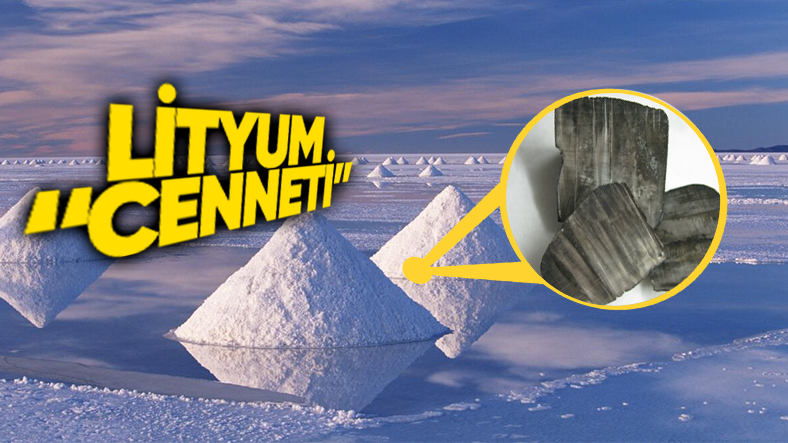The Lithium Triangle contains the world’s largest lithium reserves and more than 75% of global supply It is a region that provides
Area; Includes the salt flats of Chile, Argentina and Bolivia and the extraction of lithium here leads to serious environmental and social impacts.
Lithium; It has become indispensable for battery-powered devices such as phones, laptops and electric vehicles.
Annual consumption of the global market increasing by 8.9% every year and this increase in demand will accelerate further with the proliferation of hybrid and electric vehicles, energy storage systems and portable electronics.
While lithium is found on all six continents of the world, the salt flats of Chile, Argentina and Bolivia contain more than 75% of the world’s lithium supply. The region is known as the “Lithium Triangle” and meets the majority of global lithium demand.
The Lithium Triangle is one of the driest regions in the world, making the lithium extraction process quite complex.
Miners drilled holes in the salt flats to collect salty, mineral-rich minerals. They pump rich salt water to the surface. The water is left to evaporate for months and passed through a series of filtration processes before the lithium carbonate is extracted.
Although lithium extraction is relatively cheap and effective sustainability and long-term effects being questioned. The water consumption of the process is very high, for example, one ton of lithium requires approximately 500,000 gallons of water.
Lithium extraction in the Salar de Atacama region of Chile, consumed 65% of the water supply in the region and has severely affected the ability of local farmers to grow crops and raise livestock.
Bolivia is home to Salar de Uyuni, one of the largest salt flats in the world.
Beneath this natural wonder, the world’s total huge lithium deposits, accounting for approximately 50% There are. In 2008, Bolivia’s Former Vice President Álvaro García Linera declared that this natural resource would relieve 40% of citizens living in extreme poverty.
But their ideals do not seem to have been realized yet. Although Bolivia has rich natural resources it is a very poor country and the prospects of operating lithium mining projects independently are slim.
A similar story is playing out in Argentina. Mining companies are making huge profits while local people struggle with the environmental and social impacts of lithium mines.
Environmental friend or enemy?
Lithium mining is controversial in terms of its environmental impacts. environmental defenders, lithium-ion batteries He argues that it is of vital importance in combating the negative effects of global warming.
electric vehicles, Compared to gasoline powered vehicles It produces less carbon emissions. However, lithium mining depletes water resources and leaks harmful chemicals into the environment.
Our other content that may interest you:
RELATED NEWS
What Does Norway, Known for Its Activist Movements, Aim to Do by Building Underwater Mines? It’s Definitely Not Environmentally Friendly!
RELATED NEWS
Aren’t Mining Activities Really Harmful to the Environment as Celâl Şengör Claims?
RELATED NEWS

